5 Things You Can Do To Instantly Ride Better
Mountain biking doesn’t have to be all about going BIGGER and BADDER. Turns out, tuning up the little things is all it takes to launch your riding to the next level. Ready to step it up a notch right now? Here are 5 important tune-ups to focus on during your next ride.
1. Head Up
Look where you want to go! Next time you’re on the freeway in your car, take a quick look out your passenger window. Notice how everything is zooming by so fast that you can’t make out any one particular object? Now shift your focus out in front of the car at the overhead exit sign coming up. Notice how the sign is moving slower than the objects out your passenger window? Did your speed change? No, you’re perception of speed changed. The same is true on your mountain bike. Raising your head and looking down the trail slows your perception of speed giving you more time to process and formulate a game plan for what is coming. Looking directly at the ground in front of you results in riding in a very reactive state.
Does this mean you should never look at the trail directly in front of you? No. You should glance down at that obstacle or feature on the trail, just don’t fixate on it! Experienced riders spend about 25% of their time looking at what’s directly in front of them and 75% of their time looking down the trail. Once you’ve identified your line and plan of action, get your head up and look where you want to go!
2. Relax
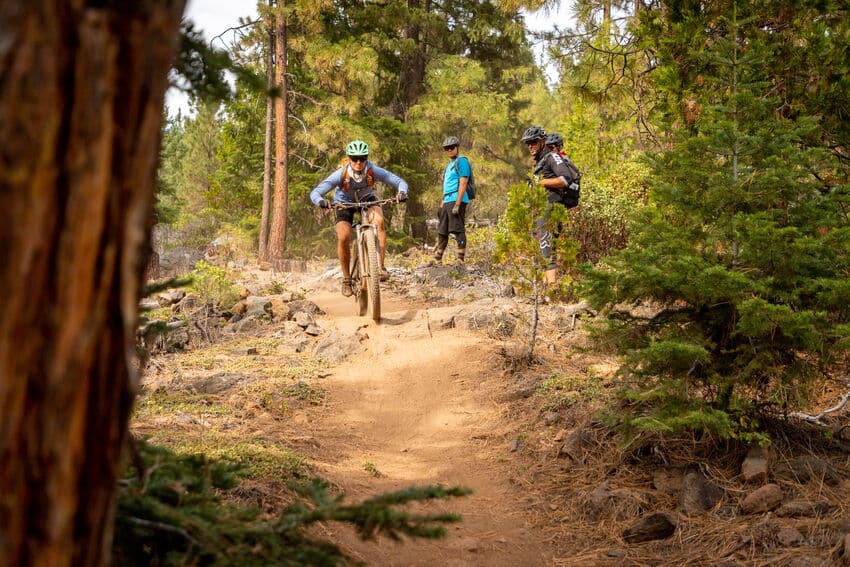 Death grips and rigid stance be damned!
Death grips and rigid stance be damned!
If you can’t wiggle your fingers, you’re holding on too tight – relax. Always keep your index finger over the brakes. With one finger braking, three fingers from each hand are sharing the job of holding the bar, even during gear shifting and using your dropper post. Your hands are more secure and balanced. Any less than three fingers on the bar and your ability to control the bike will diminish.
Your arms and legs should be slightly bent and never fully extended. Keep the majority of your weight in your feet, not your saddle or handlebars. With this stance, if the bicycle were magically removed from under you while riding, you should land flat on your feet (not your bum or face). Too far forward and you’ll be inclined to launch over the handlebars. Too far back and your front brake won’t effective.
3. Brake Before, Not During
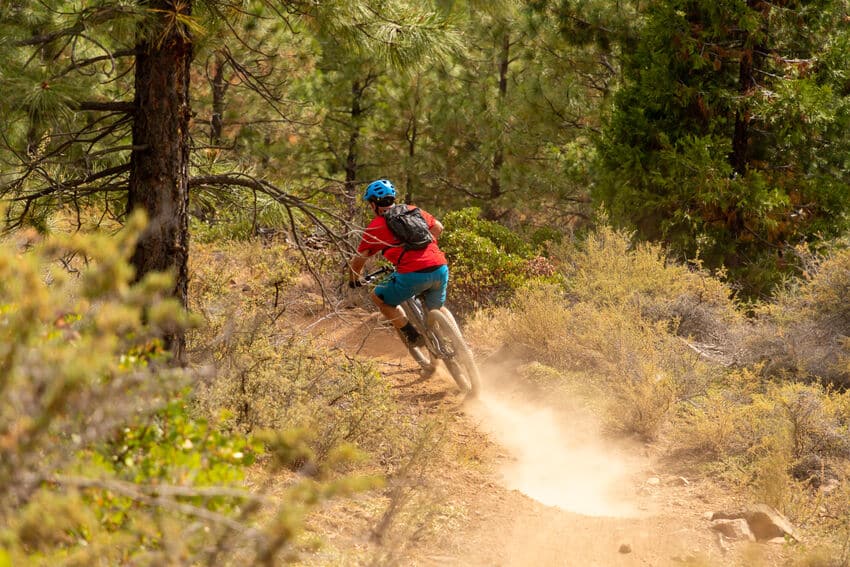 When you engage your brakes in the middle of technical terrain, your suspension is forced to dip to absorb the change in momentum. This pitches your weight forward and moves you out of your descending ready position putting you in a less stable stance at a critical moment. This can also drive your front wheel right into an obstacle causing the front wheel to stop, pitching you even more forward (and potentially over the bars). At all costs, avoid braking ON an obstacle. Braking before (rather than during) technical terrain will allow you to maintain speed to smoothly roll over (or through) the feature.
When you engage your brakes in the middle of technical terrain, your suspension is forced to dip to absorb the change in momentum. This pitches your weight forward and moves you out of your descending ready position putting you in a less stable stance at a critical moment. This can also drive your front wheel right into an obstacle causing the front wheel to stop, pitching you even more forward (and potentially over the bars). At all costs, avoid braking ON an obstacle. Braking before (rather than during) technical terrain will allow you to maintain speed to smoothly roll over (or through) the feature.
Same goes for corners. Slow down to a speed at which you can safely and smoothly negotiate the corner BEFORE you get to the entrance of the corner. Braking during the corner forces your bike to stand up pushing you towards the outside of the corner rather than around it.
When you’re first learning, go slower than you think you need to. It’s better to flow through the corner at a slow speed with good technique rather than ‘fast’ and dragging your brake all the way through the corner.
4. Ease the Squeeze
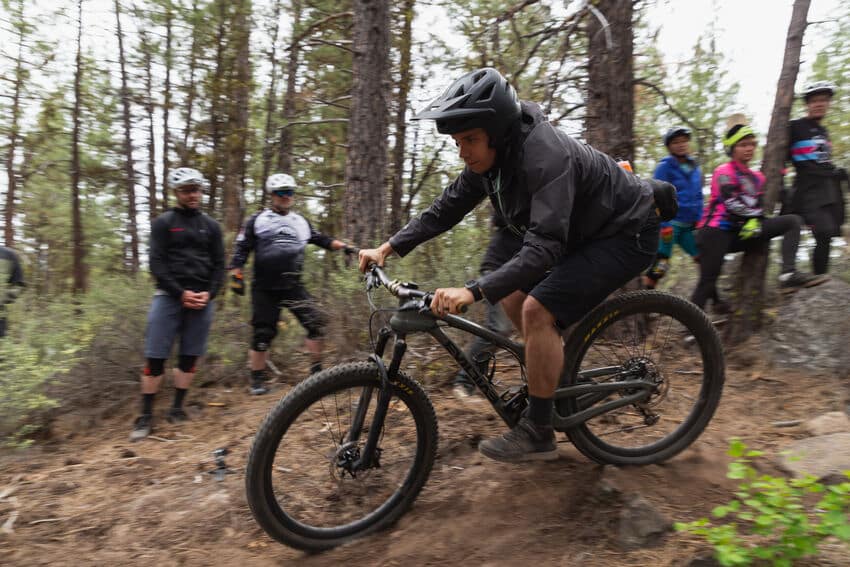 SQUEEZE your brakes smoothly to add braking power and EASE the SQUEEZE to reduce braking power. Braking forcefully and erratically (on – off – on – off) results in brief loading and unloading (bobbing) of weight on the front tire making it unnecessarily challenging to maintain your balance and traction. This is amplified in technical terrain, switchbacks or any loose or rocky terrain. Conversely, when you “ease the squeeze”, you smoothly add (or remove) brake pressure making it considerably easier to maintain a good ready position and positive traction.
SQUEEZE your brakes smoothly to add braking power and EASE the SQUEEZE to reduce braking power. Braking forcefully and erratically (on – off – on – off) results in brief loading and unloading (bobbing) of weight on the front tire making it unnecessarily challenging to maintain your balance and traction. This is amplified in technical terrain, switchbacks or any loose or rocky terrain. Conversely, when you “ease the squeeze”, you smoothly add (or remove) brake pressure making it considerably easier to maintain a good ready position and positive traction.
5. Don’t Pick
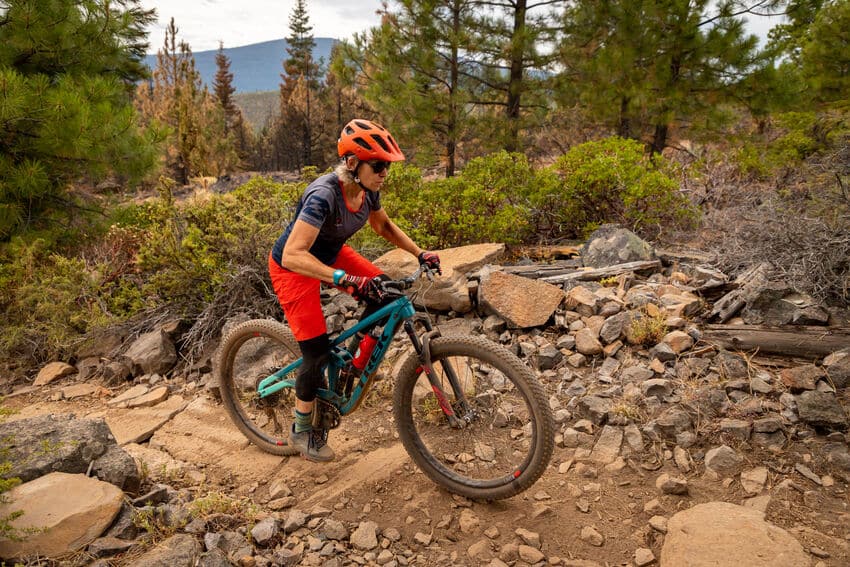 If you are picking your way over and around every rock then you’re more likely to get hung up. Look for opportunities to use your bike’s suspension that you spent all the money on! Often times, going straight at it is more efficient, faster and smoother. Going back to #2, staying relaxed will allow you to float over obstacles saving you from cherry-picking through features.
If you are picking your way over and around every rock then you’re more likely to get hung up. Look for opportunities to use your bike’s suspension that you spent all the money on! Often times, going straight at it is more efficient, faster and smoother. Going back to #2, staying relaxed will allow you to float over obstacles saving you from cherry-picking through features.
**Bonus** 6. Get Feedback
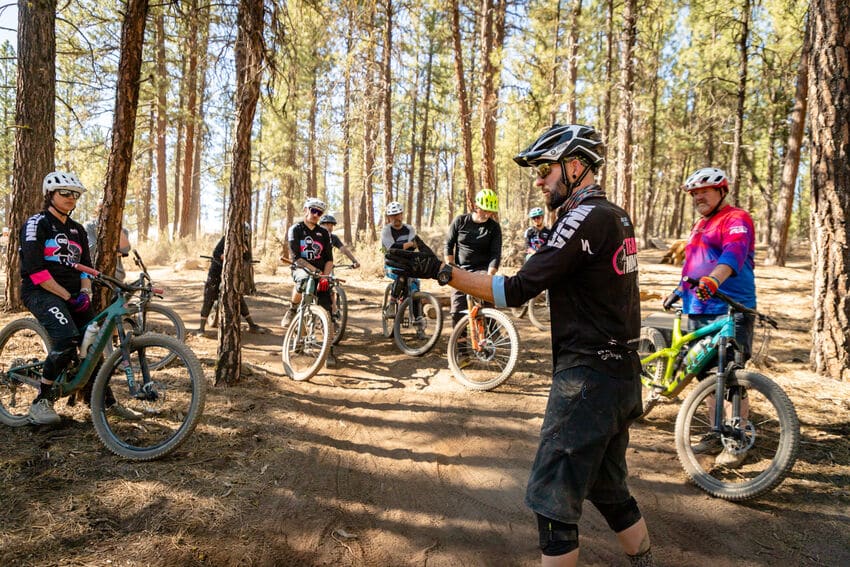 Join us for a skills Clinic, Camp or Adventure. Sure, you might say this is a bit of a shameless plug, but we wholeheartedly believe that skills coaching will help you reach your full potential on the trail. Nothing will help you improve more than having skilled, qualified instructors giving you real time feedback. For new riders, this will set the foundation for success before those bad habits set in. For more advanced riders, like it or not, we all pick up riding quirks and bad habits over time – most of which we aren’t even aware of but are holding us back! Skills events give us the opportunity to break down all the components that go into more advanced maneuvers and perfect them along the way.
Join us for a skills Clinic, Camp or Adventure. Sure, you might say this is a bit of a shameless plug, but we wholeheartedly believe that skills coaching will help you reach your full potential on the trail. Nothing will help you improve more than having skilled, qualified instructors giving you real time feedback. For new riders, this will set the foundation for success before those bad habits set in. For more advanced riders, like it or not, we all pick up riding quirks and bad habits over time – most of which we aren’t even aware of but are holding us back! Skills events give us the opportunity to break down all the components that go into more advanced maneuvers and perfect them along the way.

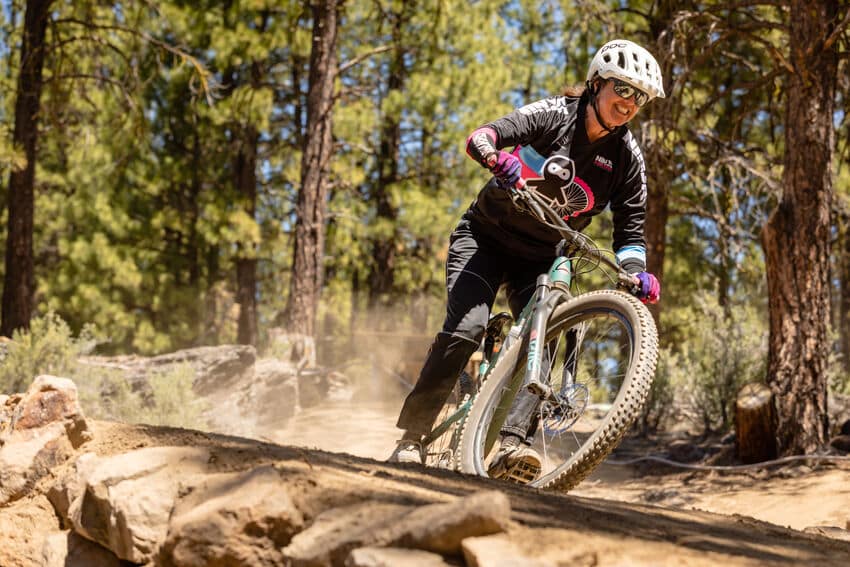






sign up for a clinic. ez pz!
Interested, do you allow class 1 ebikes?
Hi Gary / Glad to hear you’re interested! It depends on the location. If the park we’re teaching at allows them, you’re good to go. Shoot us a quick message -> http://ridelikeaninja.com/contact/ or on Live Chat and we’ll let you know either way.
I love the pics where the clinicians are standing at the ready to help the rider around or over the path. I’d like that to try to learn how to ride switchbacks and over small logs.. would def take a class next summer if this were the case!
Really enjoy the articles, pics, & dreaming!
Hey Krista!
Our instructors are trained to keep you safe on your bike during our events and the skills and confidence you gain will keep you safer on your bike afterwards. We’d love to have you join us so you can turn those riding dreams into a reality! In the meantime, here are skills articles switchbacks and log-overs to check out:
http://www.ridelikeaninja.com/2018/01/12/the-secret-to-switchbacks/
http://www.ridelikeaninja.com/2017/12/30/how-to-ride-over-a-log/
Happy trails!